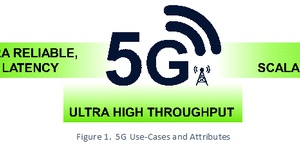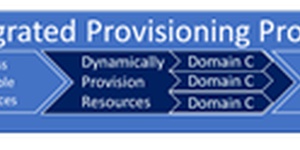
Whitepapers
Challenges and Opportunities in 5G Transport

Many service providers and vendors have tied their future to the successful commercial deployment and evolution of 5G mobile networks and services. Unlike prior generations of wireless technology, 5G is designed to support new applications, services and industries. Mobile consumers will benefit with enhanced mobile broadband, but more importantly, 5G will facilitate the launch of fixed wireless services, massive Internet of Things with billions of connected devices and ultra-reliable, low-latency services such as augmented reality and remote surgery. To support these differing use-cases with diverse performance and reliability requirements, 5G will introduce network slicing that will enable operators to create logical or virtual network partitions. Although mobile dedicated resources such as the 5G New Radio and 5G Core will be directly impacted by network slicing, it is the transport network that will connect the physical and virtual infrastructure pieces together to create an end-to-end network for each slice.
With the backing of our sponsor, ECI, ACG Research conducted an independent primary research project to identify the trends, opportunities and challenges in 5G mobile transport. We gathered 5G global transport results from leaders in mobile, wholesale and fixed-mobile converged service providers. Although the entire results of the research are not yet published, there are two findings that our OFC audience would appreciate thinking about as we approach the upcoming 2019 OFC Conference in March.
Top Transport Network Slicing Technologies and FlexE
FlexE is one of the top technologies that service providers intend to test and utilize to implement transport network slicing. FlexE was a top technology in all regions, listed as #1 in North America and #2 in EMEA. The OIF is conducting FlexE demonstrations at OFC again this year. (I already have an appointment scheduled to check it out.) Although FlexE is still early in terms of commercial availability or deployments, the ability to map IP/Ethernet mobile traffic to underlying optical transport via channel bonding and subrate multiplexing offers a flexible option for service providers to separate and slice their IP/Ethernet traffic while also maximizing utilization of the underlying optical transport.
5G and 4G Transport Network Coexistence?
In another finding, we identified that there are diverse views about how 4G and 5G transport networks will coexist both initially and over time. Everyone appreciates that 5G transport solutions will need increased capacity and faster port speeds to support 5G networks, but the debate is about how we get there. At 41%, the largest percentage of respondents believe that 5G transport networks will initially be deployed as separate and distinct from existing 4G transport solutions with 4G networks eventually migrating/converging with 5G. However, 36% of participants indicate 5G and 4G transport networks will remain fully separate and distinct. 13% of participants think 5G will initially be deployed on 4G transport networks but that 5G will separate and become distinct; 10% believe 5G will initially deploy on 4G transport infrastructure and remain converged throughout the deployment lifecycle.
This diversity of views represents an opportunity for vendors to sharpen their message and tailor their solutions to individual needs of service providers, which have daily networking, economic and operational challenges and require the help of vendors to evaluate and select the best 5G transport deployment model and migration strategy. As an example, the right initial deployment strategy that focuses on rapid time-to-market may not be optimal in the medium term where capabilities such as network slicing will become increasingly important to support the range of 5G services and use-cases.
Reach out to me via email or Linked-In if you would like to catch up at OFC 2019 to discuss the results of our 5G transport research or any other challenges you might be facing. I look forward to seeing you in sunny San Diego.
To download the paper: https://pages.ecitele.com/download-acg-survey-results-5g-transport-networks.
You might like similar whitepapers


TCO Benefits of Converged 5G Ready IP Transport

Achieving End-to-End Intelligence in the Cable Access Network

The Economic Benefits of the Ciena Virtualized Edge Solution

Building the Business Case for AI in Wireless Networks: Juniper Mist AI TCO Report

Segment Routing: An ACG Research Whitepaper

Orchestrating Dynamic Enterprise Services

Always On, Active Analytics and AI for Superior Performance in Digitally Powered Enterprises

The Evolution of Broadband Traffic: A Forecast for the Americas, EMEA, and APAC Regions

Coriant’s Multi-Sided Platform Partner Program: Market Impact Report

Hybrid Networks: Integrated Provisioning for Virtual and Physical Networks

AUTONOMOUS NETWORKS: NOW IS THE TIME

The Economic Benefits of Juniper Apstra and CN2 in a Modern 5G Network

MODERNIZING THE CABLE SERVICE DELIVERY INFRASTRUCTURE

AUTONOMOUS NETWORKS POWER INDUSTRY 4.0

A TCO Comparison of Private WANs vs Managed Network Services for Enterprises

The TCO Benefits of Dell’s Next-Generation Telco Servers

Broadband Access Transformation

Coriant Groove™ G30 Disaggregated Platform Update: Market Impact Report

Middle-Mile Networks Capacity Requirements for Fixed Broadband

AUTOMATING 5G ACCESS DEPLOYMENTS

Understanding VRAN

5G Service Assurance: The Case for AIOps

Huawei ADN Solution Approach to Implementing Autonomous Networks

Tunnel-Based versus Tunnel-Free SD-WAN

ECONOMIC BENEFITS OF THE VMWARE TELCO CLOUD AUTOMATION AND HORIZONTAL INFRASTRUCTURE

The Driving Factors behind the Telecommunications Shift to Cloud Metro Networks

Delivering Policy Continuity at Scale in Cloud IT and Managed Network Services

Huawei Autonomous Driving Network: Standards-Based but Differentiated

Key CommSoft Learnings from #MWC19

Building Open, Scalable Service Delivery Infrastructures

THE BUSINESS CASE FOR ADAPTIVE IP

5G Service Assurance: The Case for AIOps

Lenovo: Data Center Switch Solutions for Enterprise Data Centers

Next-Generation Cloud Metro Network Requirements and Architectures

Simplifying IP Networks

THE POWER OF DIFFERENTIATION: BUILDING BROADBAND FOR 2021 AND BEYOND

An Approach to Offering Profitable Managed Network Services

Global Pricing for SD-WAN

Virtualization Journey: Cable Companies Are on Their Way

Accelerating Revenue and Innovation in CSPs' Distributed Clouds

Itential Vendor Profile: Automation and Orchestration for Multi-Domain Networks

Comparing Broadband Network Architectures in the Evolving Connectivity Landscape

The Economic Benefits of a Super-Converged Multi-Access Edge Network

The Economic Benefits of Virtual Edge Services








